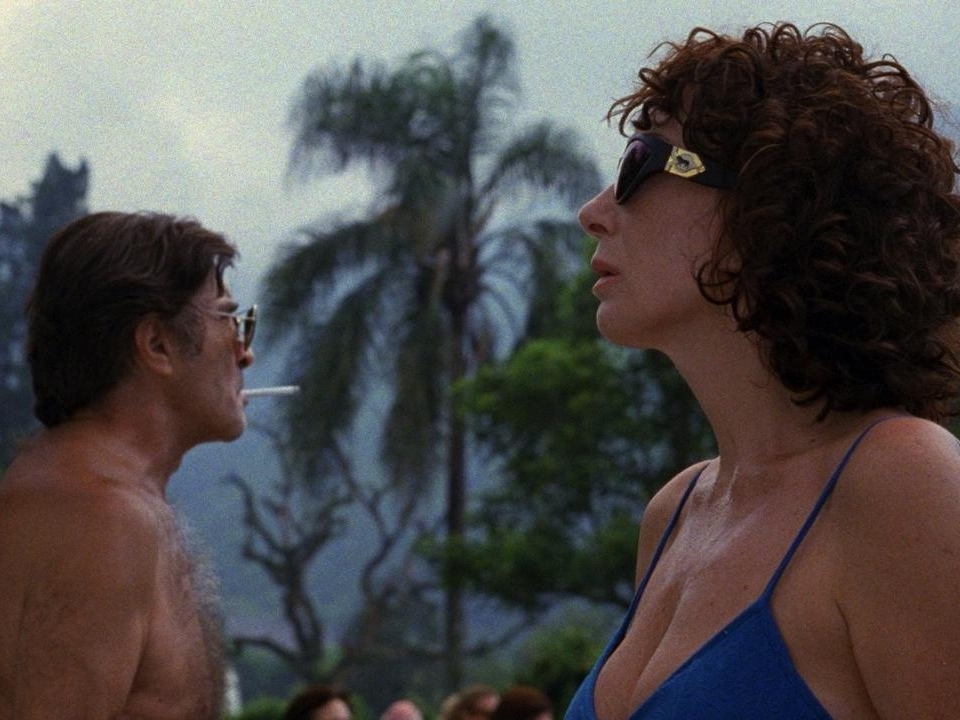
The life of two women and their bourgeois families in a small provincial town of Salta, Argentina – Martel’s own hometown.
EN
“As Lucrecia Martel demonstrates in La Ciénaga [The Swamp], there is more twisted banal horror and caustic humour to be discovered in the forms of personal narrative than found within the boundaries of the horror genre itself. La Ciénaga is a horror film in a way, though it is as inscrutable as the work of Claire Denis, as biting as that of Luis Buñuel, and as rich and unmistakably stamped with an undercurrent of discomfort as Martel’s own films La Niña Santa [The Holy Girl] (2004) and La Mujer sin Cabeza [The Headless Woman] (2008). Loosely plotted, La Ciénaga observes a somewhat wealthy extended family spending a summer cramped together in an isolated, wet, decaying mansion in a provincial town in the provinces. The adults are frequently motionless, often immobilised in an alcoholic stupor beside a filthy, brackish swimming pool, filled with green-tinged water and debris, where they smoke, complain, and seemingly wait for death to relieve them of their boredom.”
Gwendolyn Audrey Foster1
“Beginning in the mid-1990s, young directors, the majority of whom had graduated from one of many film schools in Argentina, began producing low-budget, independent films in a style that earned this group the classification of the New Independent Argentine Cinema. [...] These filmmakers want to break with the notion of an Argentine exceptionalism, whereby Argentina is viewed as different from other Latin American countries due to its large immigration from Italy and Spain (i.e., European background and aspiration) and distancing from an indigenous past. In other words, this younger generation of filmmakers in large part does not identify with a European-influenced and -inflected culture. Rather, these filmmakers identify with ethnic minorities and working-class people in Argentina and project a more varied and heterogeneous face of national identity in Argentina. They show films from a rougher, working-class perspective (especially after the economic crisis of 2001), as shown by such films as Un oso rojo [A Red Bear] (2002) by Adrian Caetano, El Bonaerense (2002) by Pablo Trapero, and Taxi, an Encounter (2001) by Gabriela David. Additionally, there are films that work to deconstruct or disrupt the hegemony of the middle- or upper-middle-class family, as in Martel’s La ciénaga (2001), and Live-In Maid (Jorge Gaggero, 2004).”
Tamara Falicov2
“In [Martel’s] approach, sound is never a redundant accompaniment to what’s on-screen. Few contemporary filmmakers have explored the possibilities of that element of filmmaking as expressively. Ice cubes tinkling in a glass, chairs being dragged across the floor, thunder, gunshots: sounds give the images a disturbing dimensionality. The director often doesn’t storyboard, but she always plots out her soundscape before shooting: ‘It is sound that drives me,’ she has said. ‘Image is a way of avoiding something that I want to hear but not to see.’ What is visible is there to avoid showing something else. Without calling this a horror film, we can say that La Ciénaga uses the genre mechanisms that foreshadow the emergence of the monstrous. Something terrible waits crouched outside the frame, and, at any moment, catastrophe could burst in.”
David Oubiña3
- 1Gwendolyn Audrey Foster, “La Ciénaga,” Senses of Cinema, October 2011.
- 2Tamara Falicov, “The Many Facets of New Argentine Cinema,” MUBI Notebook, 6 September 2017.
- 3David Oubiña, La Ciénaga: “What’s Outside the Frame,” Criterion, 26 January 2015.

